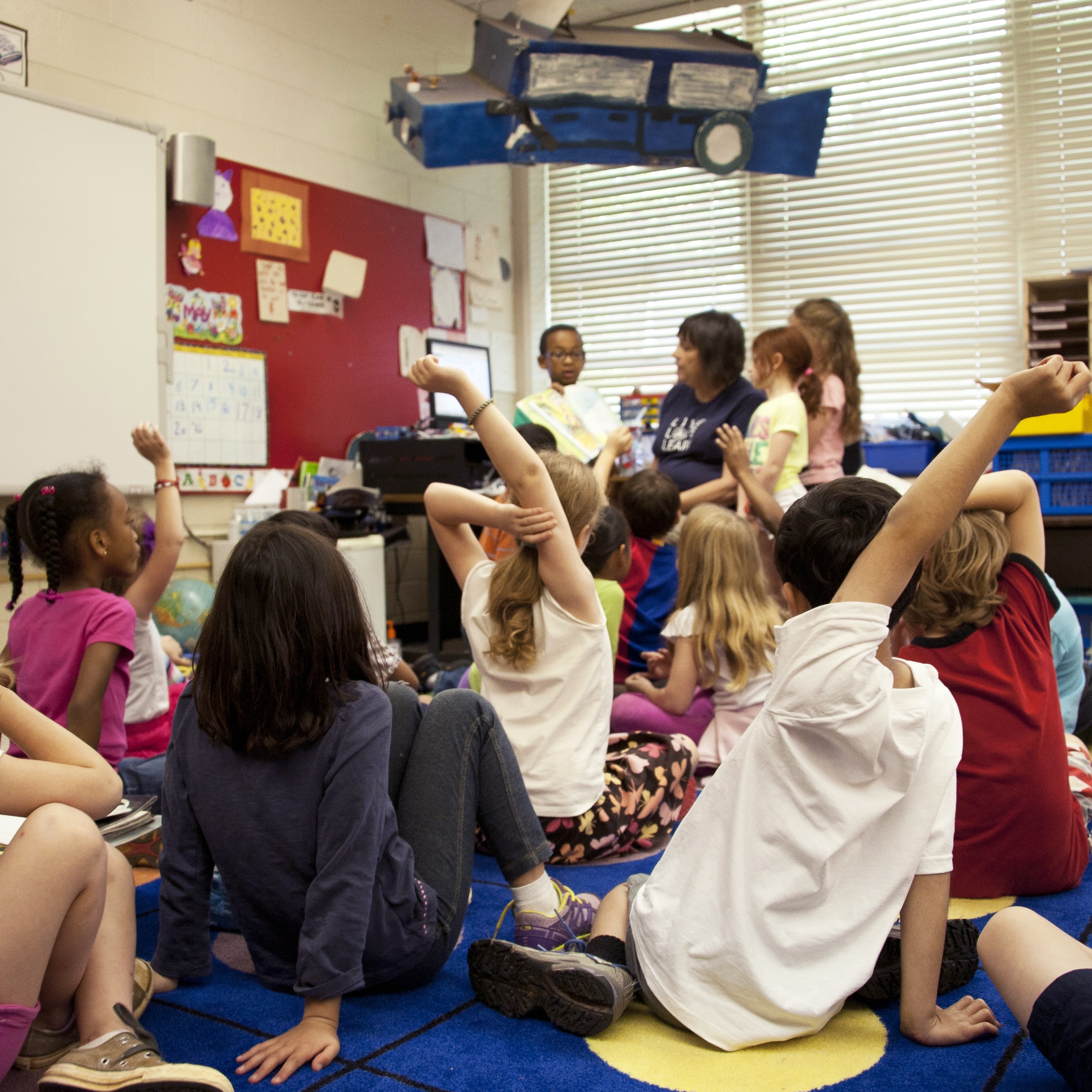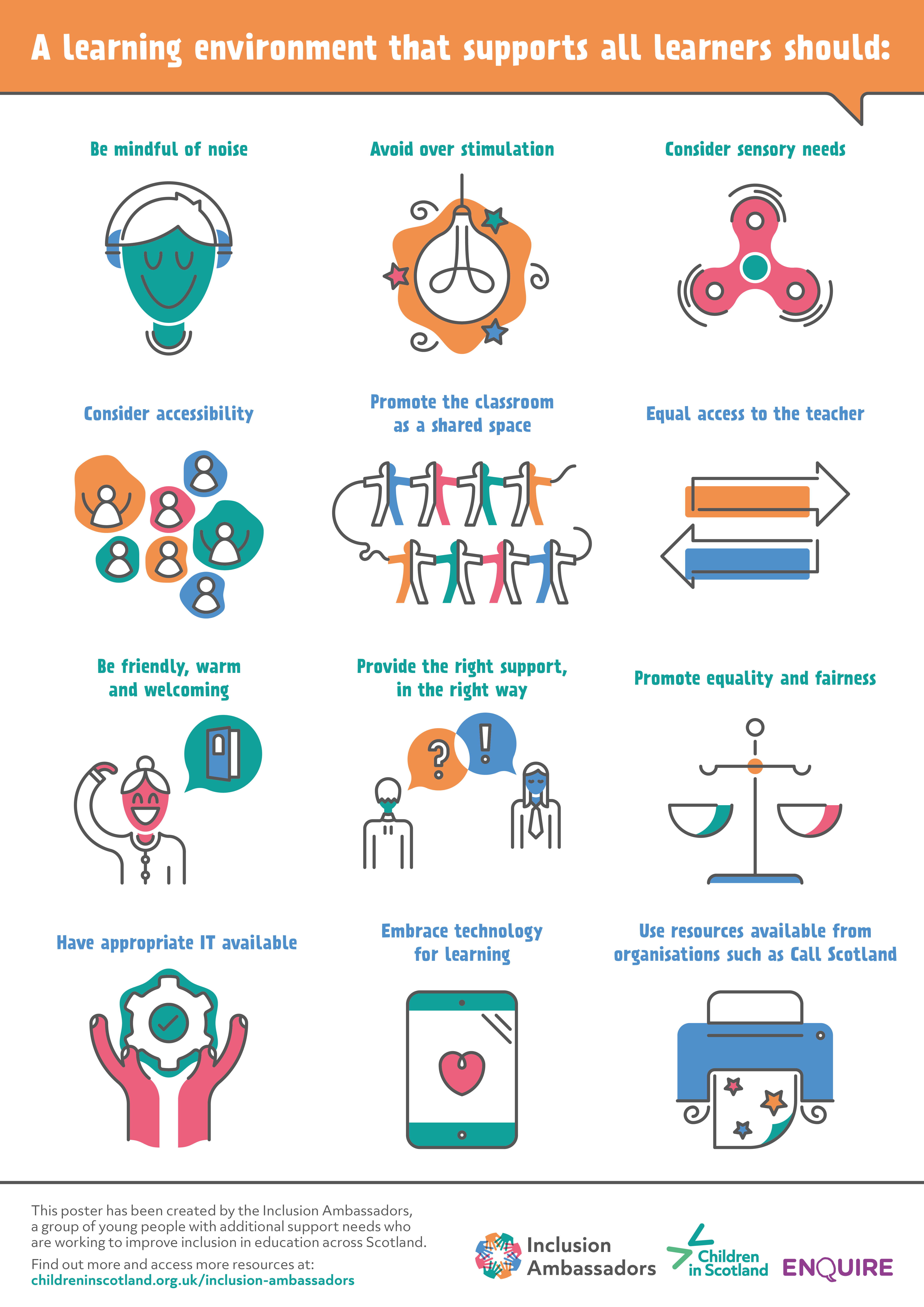Class act: promoting inclusive school settings
28 Feb 2023
Adjustments to classroom layout, increased access to technology and assistive technology and more awareness of sensory issues are all small changes that could lead to huge gains for pupils with additional support needs, writes Chris Ross.
We know the impact that our environment has on how we feel. The people we are with, the noise and light or the layout of a space all affect how we engage with it.
Through our work with the Inclusion Ambassadors group we have regularly covered how different aspects of this affect their experiences of school both in terms of how they feel about being there and how it supports or affects their learning.
Noise can make people feel overwhelmed, how teachers act affects how safe people feel and a lack of appropriate technology can limit how people are able to engage with learning. Ultimately, if the learning environment is not inclusive, it can impact on delivering on a child’s right to education. Getting the environment right is also central to realising the Inclusion Ambassador’s Vision Statement for Additional Support for Learning.
What does an ideal learning environment look like?
Through a series of online and in-person meetings we have explored these issues further to consider what their ideal learning environments would be like. We explored the sensory environment, the lay out of the classroom, the technology they have available and how staff act. Based on what they’ve told us, we have developed a new visual resource for teachers and other staff in schools to support them to create the learning environment that children and young people want.
What the group told us is not necessarily difficult to implement, however, for too many, it is not a reality. Too often ‘traditional’ ways of doing things get in the way of what actually would support children and young people to have more positive experiences of school and to work in ways that would support their learning.
A key challenge is getting this right for everyone. We need to consider the needs of individuals and find approaches that work for them. One size fits all approaches do not work.
A more relaxed environment
It is clear that children and young people want a more relaxed environment in which to learn.
We know the busyness of a classroom can also generate a lot of noise and many asked for more awareness of how this can impact children and young people with support needs, calling for a recognition that there may have to be some adjustments made for pupils such as wearing noise cancelling headphones or listening to music.
In addition, they welcomed an approach that would accommodate sensory needs, perhaps being allowed to use fidget toys or stress balls if it helps with concentration. A quiet corner and the introduction of soft furnishings would also help the classroom feel like a safe space.
Many also recommended dimmer lighting, highlighting how bright lighting can be overstimulating.
Doing this will help bring nurture type approaches into the physical environment, putting people in a better position to learn, feeling comfortable, happy and safe.
Access to technology
Awareness and availability of supportive technology in classrooms are crucial for inclusion. This could range from embracing tablets and educational apps to make learning more accessible for those with support needs, to the provision of specialist IT support.
Schools and school staff need to ensure a range of provision is available for children and young people who need additional support. A number of organisations, such as Call Scotland can offer supportive technologies and provide information about what would work for people. We found many of the group were unaware of the resources potentially available to them and would encourage schools and local authorities to engage with the support that is available to ensure young people have access to the resources that will support their learning.
There are also a number of fantastic resources that currently exist to support engagement and access. Talking Mats for example is great example of an existing resource designed to help support those with communication difficulties.
Classroom setup
The Inclusion Ambassadors spoke about the impact of the physical environment of the classroom and a desire for there to be more flexibility in how classrooms are laid out. They highlighted the importance of considering accessibility and being mindful that some pupils may appreciate or need extra space to move around due to mobility or sensory needs.
Interestingly, the group also highlighted the need to ensure equity of access with any classroom setup, with some layouts favored over others for promoting ease of access to the teacher. More boardroom style layouts were preferred as they also were perceived to offer the teacher more view of the room and the pupils and lead to less bullying in the classroom.
Finally, the Inclusion Ambassadors were keen to emphasise the importance of promoting the classroom as a shared space and voiced appreciation for when pupils’ work was used to decorate the walls.
Teachers and support staff
The group highlighted that they want teachers and school staff to be approachable, kind and welcoming. They want staff to be interested in their lives and to build meaningful relationships with them. This can easily be done through encouraging friendly conversation. Many spoke of how teachers who shout can make them feel scared or anxious in class.
Crucial for inclusive teaching and support was a person-centred approach that asked what help or support could look like, and builds on the needs and wants of the pupil.
All of this reflects what Children in Scotland has found in previous work for the GTCS and their professional standards (click here for more) as well as our recent work on Pupil Support Staff.
Click here to access podcast episodes on what makes a good pupil support assistant looks like
Implementing these approaches across all schools would be a key step towards embedding a rights-based approach to education. It shows trust and respect for the children and young people and places them at the centre of their learning environment. To get this right requires ongoing engagement with pupils to discuss what works for them as individuals and also considering how this works within a wider classroom. By taking these steps to make classrooms and school environments more inclusive, we are certain it will become a safer, happier space for everyone.
New Visual Resource
Our new visual resource is aimed at being a helpful reminder for staff about what children and young people want. It is based directly in evidence from the Inclusion Ambassadors about what works well.
Teachers and schools may wish to display this within the school. It should also be used to consider more actively the environment that's being provided. We would also advocate for discussing this directly with children or young people you work with and consider what they want within their setting.
Click here to access the digital version of the visual resource
Please email cross@childreninscotland.org.uk if you wish to discuss this further with a member of the Inclusion Ambassadors team.
For more information about providing assistive technology contact Call Scotland callscotland.org.uk/
To find out more about Talking Mats, visit talkingmats.com

Inclusion Ambassadors
Find out more about the work of the Inclusion Ambassadors
Click here to access
Resource bank
View the list of resources produced by and with the Inclusion Ambassadors
Click here to access

The Children in Scotland Podcast
Access episodes that feature the Inclusion Ambassadors
Click here to access
Participation work with young people
Find out more about our work on children’s and young people’s participation and engagement
Click here for more
Our services
We offer we offer a range of services that provide support, advice and representation for children and families
Click here for more